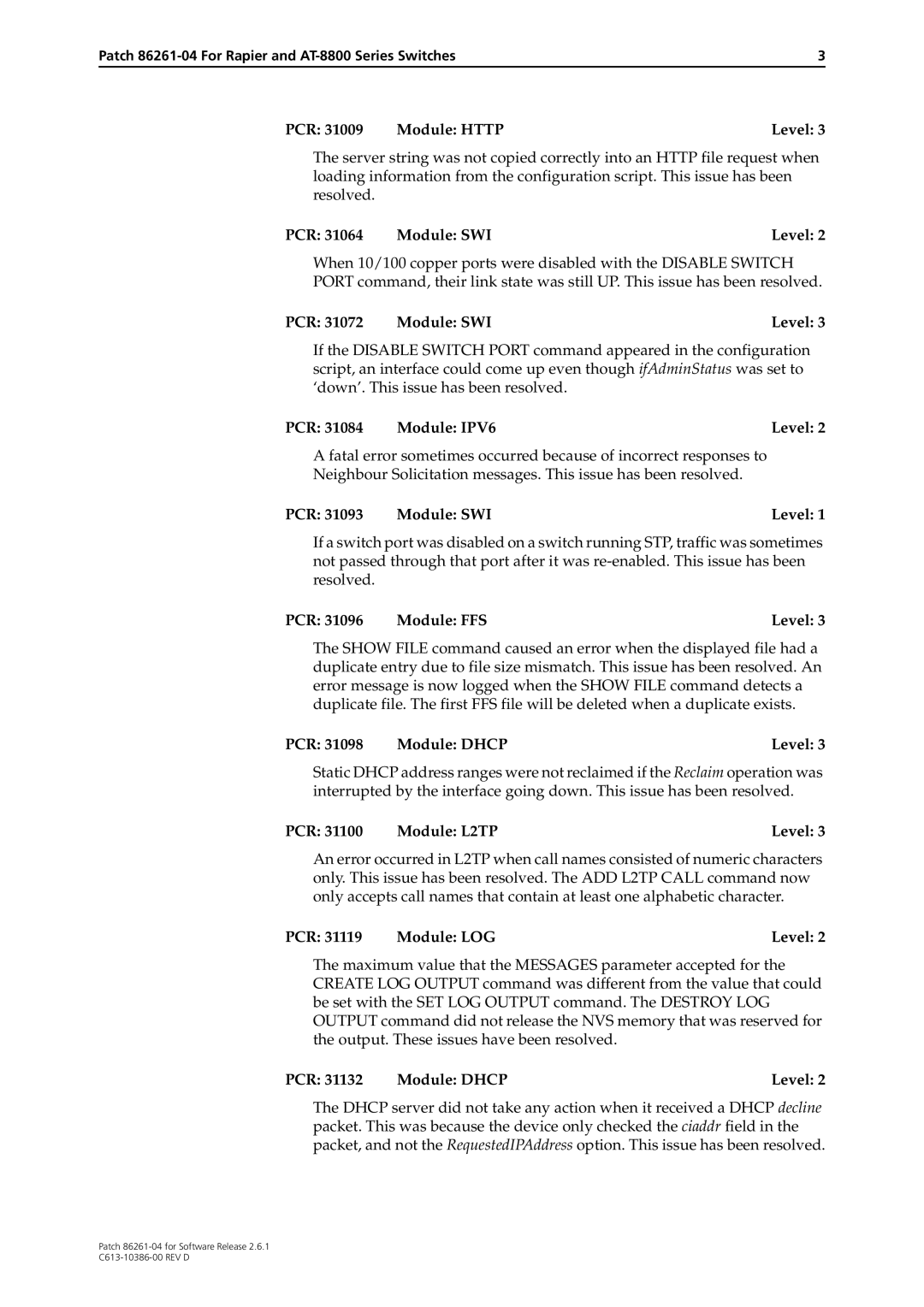Patch 86261-04 specifications
Allied Telesis Patch 86261-04 is a highly reliable and efficient network switch designed for both enterprise and small to medium-sized business environments. Renowned for its robust performance and advanced features, this patch panel is an integral component for optimizing network connectivity.One of the key characteristics of the 86261-04 is its superior build quality. This patch panel is constructed with high-grade materials that ensure durability even in challenging environments. The design focuses on effective heat dissipation, allowing for extended use without the risk of overheating. This feature is particularly vital for maintaining uptime in business-critical systems.
The 86261-04 boasts a versatile port configuration, typically including multiple 10/100/1000 Mbps Ethernet ports that support various networking requirements. Its ability to auto-sense the speed of incoming connections streamlines network management and scalability. Additionally, the switch supports Power over Ethernet (PoE), enabling it to deliver power alongside connectivity to devices such as IP cameras, wireless access points, and VoIP phones. This reduces the need for additional power sources and simplifies installation.
Advanced security features are another highlight of the Allied Telesis Patch 86261-04. It incorporates VLAN capabilities, allowing network administrators to create isolated segments within the network for enhanced security. This segregation helps prevent unauthorized access and minimizes the risk of data breaches. Alongside security protocols, the switch supports Quality of Service (QoS) which prioritizes traffic according to the needs of the business, ensuring critical applications function smoothly even during peak usage times.
In terms of technology, the 86261-04 is designed with ease of configuration and management in mind. It is compatible with both command-line and web-based interfaces, providing flexibility for network administrators with varying levels of expertise. Comprehensive monitoring and reporting tools guide users in troubleshooting and optimizing network performance.
Moreover, Allied Telesis is known for its commitment to sustainability, and the 86261-04 is no exception. This model is energy-efficient, contributing to lower operating costs while maintaining high performance standards.
In summary, the Allied Telesis Patch 86261-04 stands out with its robust design, versatile port configuration, extensive network security features, and commitment to energy efficiency, making it an excellent choice for organizations looking to enhance their networking capabilities.
